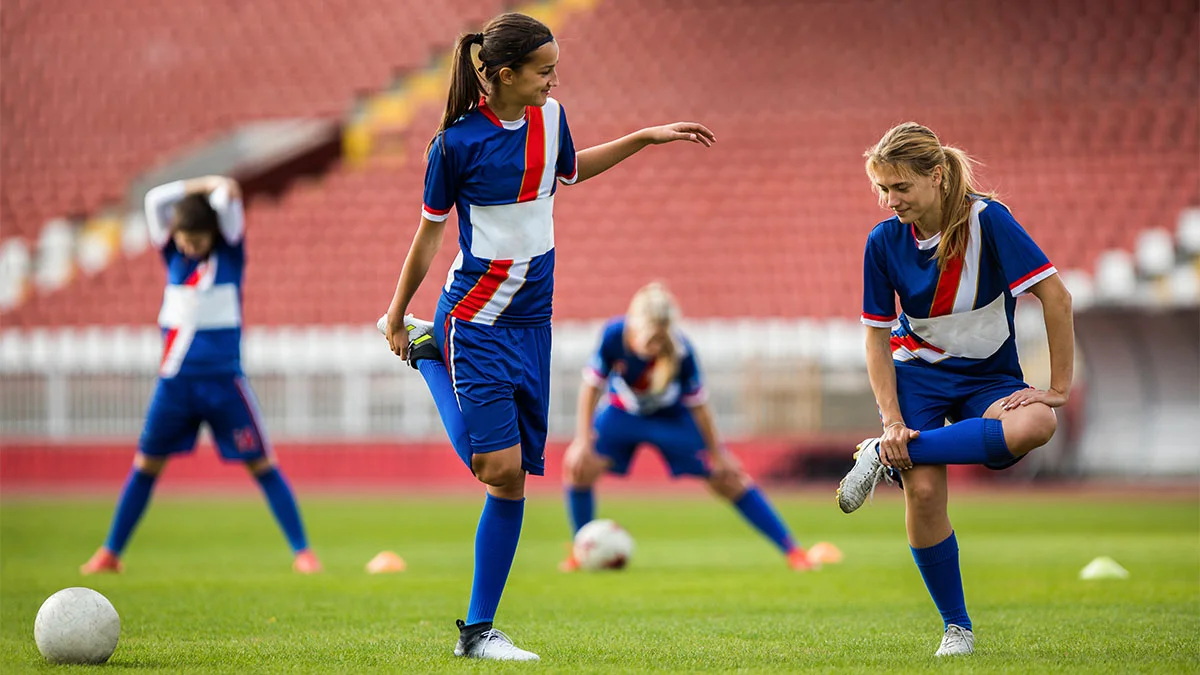We often see athletes warming up before their competitions, whether on the sidelines of a rugby field, the edge of an athletic track, or in the gym. Warming up is an integral part of modern sports routines, embraced by both elite competitors and recreational athletes. Warming up incorporates specific exercise that prepares the body for the requirements of the sport or activity.
For example, a tennis player might start with a light jog or jump rope to increase their muscle temperature, followed by a combination of dynamic stretches and bodyweight exercise, then tennis-specific drills. This methodical preparation aims to gradually increase heart rate, optimise blood circulation, activate muscles, and prepare the mind for the demands of play. Through this process, movement patterns are optimised, the risk of muscle injuries is reduced, and the athlete feels more psychologically prepared for competition. Ultimately, warming up is a fundamental practice that primes both body and mind, ensuring athletes are fully prepared to perform at their best.
Enhancing Performance
Warm-ups are proven to improve various performance metrics such as sprint speed, jump height, agility, and other sport specific metrics. A systematic review by McGowan et al. (2015) emphasised that warming up increases muscle temperature, which improves muscle elasticity and contractile efficiency. This allows athletes greater range of movement and more force producing capability.
Another study found that athletes can benefit from dynamic stretches and sport-specific drills before play, which enhances neuromuscular coordination and prepares the body for peak performance (McCrary, Ackermann, & Halaki, 2015; Hammami et al., 2018).
Reducing Injury Risk
Warm-ups play a crucial role in injury prevention. A meta-analysis by Ding et al. (2022) found that implementing structured warm-up programs reduced injury rates by 36% among young athletes. This is particularly important in sports with high injury risks, for example basketball and soccer, where neuromuscular control and balance exercises within warm-ups have been shown to decrease the incidence of injuries like ACL tears and ankle sprains (Sports Medicine – Open, 2022).
Another systematic review highlighted that tailored warm-up routines incorporating dynamic movements and progressive intensity can prevent muscle strains and joint injuries (Hammami et al., 2018; McGowan et al., 2015).
Psychological Benefits
The psychological advantages of warming up are equally significant. Pre-competition routines help athletes reduce anxiety, increase focus, and build confidence, all of which are critical for performance (Palucci Vieira et al., 2021). Another review by Cuenca-Fernández et al. (2022) discussed how psychological preparation during warm-ups can lead to improved concentration and mental readiness, reducing pre-competition stress. Elite athletes and sports teams often include visualisation and meditation into their warm-ups to optimise psychological preparedness. These routines allow athletes to establish confidence, establish focus, foster self-assurance, and a readiness to compete.
Things to keep in mind during your warm up
General Aerobic Activity
- Start with 5-10 minutes of light jogging, cycling, or skipping to raise body temperature and improve cardiovascular readiness.
Dynamic Stretching
- Perform dynamic stretches like leg swings and arm circles to enhance muscle elasticity and range of motion.
Joint Mobility Exercises
- Perform joint mobility exercises, such as hip circles, to improve flexibility and reduce stiffness.
Sport-Specific Drills
- Include drills that mimic game movements, such as dribbling or agility exercises, to prepare for sport-specific demands.
Progressive Intensity Exercises
- Gradually increase exercise intensity with activities like incremental sprints to match session or competition demands.
Mental Preparation
- Engage in mental preparation techniques like visualisation and positive self-talk to reduce anxiety and increase focus.
References
Boullosa, D., Del Rosso, S., Behm, D. G., & Foster, C. (2018). Post-activation potentiation (PAP) in endurance sports: A review. European Journal of Sport Science, 18(5), 595-610. https://doi.org/10.1080/17461391.2018.1438519
Cuenca-Fernández, F., Boullosa, D., López-Belmonte, Ó., Gay, A., Ruiz-Navarro, J. J., & Arellano, R. (2022). Swimming warm-up and beyond: Dryland protocols and their related mechanisms—a scoping review. Sports Medicine Open, 8(1), 120. https://doi.org/10.1186/s40798-022-00514-y
Ding, L., Luo, J., Smith, D., Mackey, M., Fu, H., Davis, M., & Yanping, H. (2022). Effectiveness of warm-up intervention programs to prevent sports injuries among children and adolescents: A systematic review and meta-analysis. International Journal of Environmental Research and Public Health, 19, 6336-6353. https://doi.org/10.3390/ijerph19106336
Hammami, A., Zois, J., Slimani, M., Russel, M., & Bouhlel, E. (2018). The efficacy and characteristics of warm-up and re-warm-up practices in soccer players: A systematic review. Journal of Sports Medicine and Physical Fitness, 58(1-2), 135-149. https://doi.org/10.23736/S0022-4707.16.06806-7
McCrary, J. M., Ackermann, B. J., & Halaki, M. (2015). A systematic review of the effects of upper body warm-up on performance and injury. British Journal of Sports Medicine, 49(14), 935-942. https://doi.org/10.1136/bjsports-2014-094228
McGowan, C. J., Pyne, D. B., Thompson, K. G., & Rattray, B. (2015). Warm-up strategies for sport and exercise: Mechanisms and applications. Sports Medicine, 45(11), 1523-1536. https://doi.org/10.1007/s40279-015-0376-x
Palucci Vieira, L. H., Santinelli, F. B., Carling, C., Kellis, E., Santiago, P. R. P., & Barbieri, F. A. (2021). Acute effects of warm-up, exercise, and recovery-related strategies on assessments of soccer kicking performance: A critical and systematic review. Sports Medicine, 51(4), 661-705. https://doi.org/10.1007/s40279-020-01391-9
Sports Medicine – Open. (2022). The effectiveness of neuromuscular warmups for lower extremity injury prevention in basketball: A systematic review. Sports Medicine – Open. https://doi.org/10.1186/s40798-022-00407-0
Sports Medicine. (2021). Revisiting the ‘whys’ and ‘hows’ of the warm-up: Are we asking the right questions? Sports Medicine. https://doi.org/10.1007/s40279-021-01478-9



